In 1992, on the verge of completing their degree in Computer Science at the Federal University of Santa Catarina (UFSC), then university students Claudio Grando and Ricardo Cunha were still studying an innovative way to apply the knowledge they had acquired in class. The only certainty at that time was that both wanted to work with good people, who shared the same values and the same objective: to transform lives and companies.
Initially, the two developed software for optimizing wood slab cutting aimed at the furniture industry. But they soon realized a great similarity with problems faced in fashion confections. This was the birth of the easy and intuitive solution that would revolutionize the fashion industry in Brazil and worldwide.
The name Audaces comes from the word Audacia, present in the DNA of its founders and the company itself. For 30 years it has been the fuel that drives partners and employees to innovate, revolutionize and transform the lives of those who are also passionate about what they do, as is Audaces.
Today, three decades later, Audaces has become a world reference in technological innovation for the fashion market, exporting its products to more than 70 countries and consolidating itself as a leader and reference in Latin America.
Do you want to know more about the history, the market vision, and what is coming in the coming years? Then read below the interview of the founders of Audaces, Claudio Grando and Ricardo Cunha.
Sumário
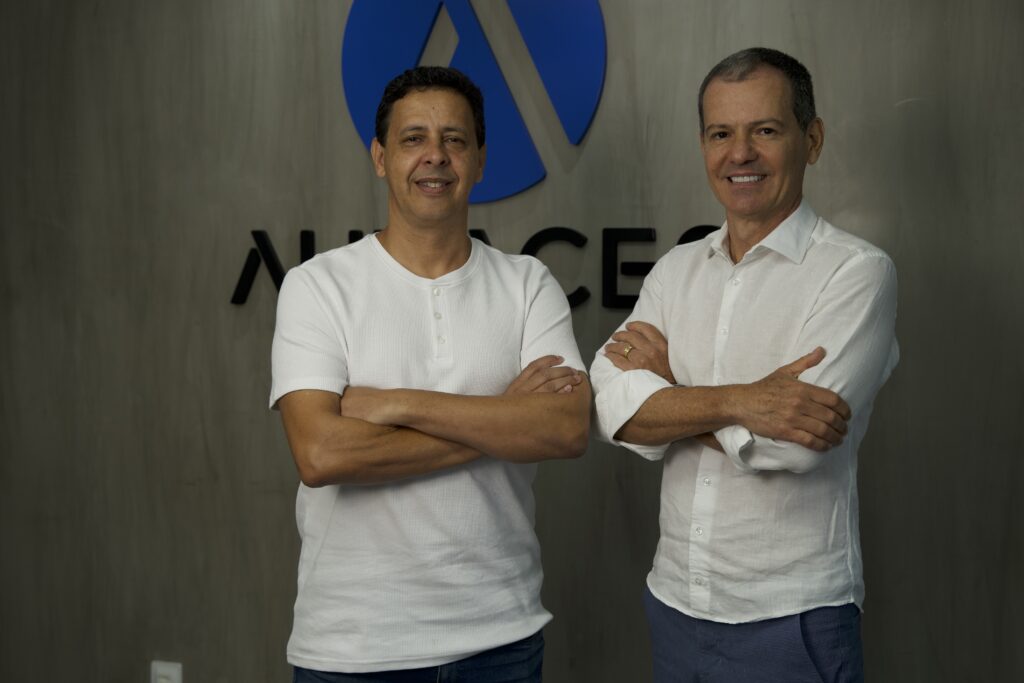
How did the idea of creating Audaces come about?
Ricardo: Even very young, in 1992, we already understood that what we were doing was something cool. We were inside the university, in a technology context, starting to witness the demand from companies, as many people knocked on the door saying they needed solutions to certain problems – and we were already aware that we could do something. And, as we delved a little deeper into this work, we saw that there were some market opportunities. So we realized that the time had come to take what we were creating inside the university and put it on the street. It’s a little bit of that return, right? We graduate from university to do something in life. And at that moment when we decided to set up the company, we saw that this opportunity existed and was concrete.
Grando: When Ricardo and I were about to graduate, and still in doubt about what we would do “with life”, we had some certainties. The first one was that we wanted to work with good people. The second is that we wanted to bring technology to industries and the market, generate results and transform people’s lives. But, without a doubt, the biggest deciding factor was related to people: well, let’s create a company because that way we control the environment, knowing that we will have good people with us.
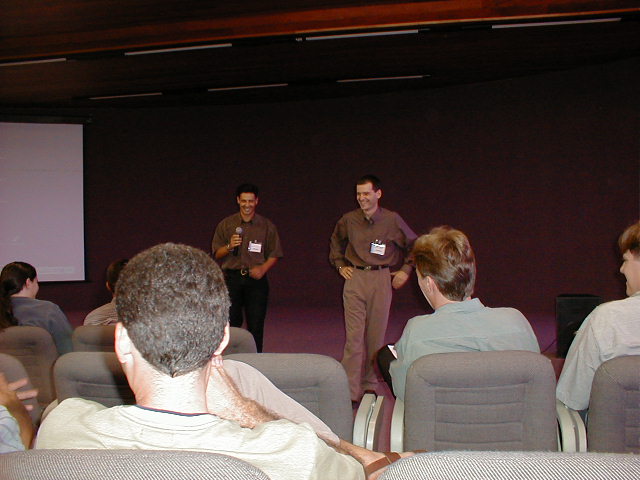
When did you realize that the solution developed by the company could benefit the fashion industry?
Ricardo: This is even a funny situation. We started our work as a company by developing a product that was intended to optimize raw materials. At that time, we did it for the furniture industry and, over time, we realized that we could do something similar for fashion. We realized that, in the clothing industry, there was a similar problem, and we started to get a little closer to this area to see how we could serve it. And of course, at that time, we were already doing CAD applications, we had a graphic design, we used computer graphics, and then we saw that the two things were married: this optimization of the raw material with the technology base that we already had towards creating CAD applications.
Grando: We started in other industries and always with artificial intelligence, graphic systems. And the solution that we had for planning the optimization of wood sheet cutting, we realized had a similarity with the textile and apparel industry. And from there, we migrated and created a solution, because we understood that there was an equally interesting market there.
What makes Audaces a company that stands out in its segment?
Ricardo: Even very young, in 1992, we already understood that what we were doing was something cool. We were inside the university, in a technology context, starting to witness the demand from companies, as many people knocked on the door saying they needed solutions to certain problems – and we were already aware that we could do something. And, as we delved a little deeper into this work, we saw that there were some market opportunities. So we realized that the time had come to take what we were creating inside the university and put it on the street. It’s a little bit of that return, right? We graduate from university to do something in life. And at that moment when we decided to set up the company, we saw that this opportunity existed and was concrete.
Grando: When Ricardo and I were about to graduate, and still in doubt about what we would do “with life”, we had some certainties. The first one was that we wanted to work with good people. The second is that we wanted to bring technology to industries and the market, generate results and transform people’s lives. But, without a doubt, the biggest deciding factor was related to people: well, let’s create a company because that way we control the environment, knowing that we will have good people with us.
When did you realize that the solution developed by the company could benefit the fashion industry?
Ricardo: This is even a funny situation. We started our work as a company by developing a product that was intended to optimize raw materials. At that time, we did it for the furniture industry and, over time, we realized that we could do something similar for fashion. We realized that, in the clothing industry, there was a similar problem, and we started to get a little closer to this area to see how we could serve it. And of course, at that time, we were already doing CAD applications, we had a graphic design, we used computer graphics, and then we saw that the two things were married: this optimization of the raw material with the technology base that we already had towards creating CAD applications.
Grando: We started in other industries and always with artificial intelligence, graphic systems. And the solution that we had for planning the optimization of wood sheet cutting, we realized had a similarity with the textile and apparel industry. And from there, we migrated and created a solution, because we understood that there was an equally interesting market there.
What makes Audaces a company that stands out in its segment?
Ricardo: I could say a lot of things. We are very dedicated to the market in which we operate. And the dedication translates into going to the market, understanding the customer, creating things that were really useful from the user’s point of view and not from a laboratory’s point of view. I think there is a very interesting aspect as well: the challenge. We always liked to challenge ourselves a lot. You see: two young people in a South American country, in Brazil, competing with a lot of technologies around the world, and we were never reduced because of that. We went after the challenge. People often told us that this would not be possible, that it was very difficult to do. And we, even so, put our faces and did it. I think this is an aspect that translates a bit the issue of Audaces, of audacity. And indeed, the opportunity. The opportunity arose. Just as we have a local origin that lacks technology, there is a lot of opportunity for technology. And we, appropriating this knowledge and this value, managed to make a successful foray into the market.
Grando: We have always developed innovative, different technology, with a lot of intelligence behind it and extremely easy to use for our customers. The first point that stood out to us was the ease of use of our solutions compared to the high technology that we used within our systems. And also the transformation in the client’s business. I think this is our biggest highlight. One thing that puts me at ease and that I tell people is that when we bring a product with Audaces expertise to the customer, we know it will transform their business and their lives. Because we are applying and generating results for the client. I think this is the main reason for our success.

How does the development process of Audaces solutions and equipment happen?
Ricardo: This contact with the customer and the market already gives us many assumptions about what the technology of the future could be. And of course, we also look a little transversally. What is happening in the market and how this can be appropriate in the areas where we operate. So I would say to you that there is a bit of a challenge: what will be the next challenge that we will bring to meet a market need? So I think there are these two components: the search for knowledge, the search for new research or related areas, which can be brought to the area in which we work. And, of course, an ear and a look that is very attentive to the needs of the market.
Grando: We are very close to the customer, so we analyze how fashion behaves in the US, Europe, Asia, Latin America and what is the next step for each of these markets, as they are at different times, and what are the solutions that we should offer to these industries so that we can collaborate with their development. We also receive many suggestions from customers for new products and tools. But we’re recognized for some disruptions we’ve made in the market. Digiflash, for example, was the first solution in the world to digitize with photos, in 2004. Nobody asked us to do that, we saw the opportunity to create it. 4D, more recently, is based on the analysis of how the designer has been developing fashion for centuries. And we saw that technology solutions, including ours that existed until then, did not follow the natural process of creating a stylist. So we created a survey and developed something really disruptive, a technology patented by Audaces. And 4D was born, which a today is a unique tool in the world, and, for the first time, the stylist has a tool in his hand where he can bring his creations to life in a few minutes.
In addition to Audaces, present in the company’s DNA, what other values move Audaces towards its goals?
Ricardo: We have been studying how to apply some technologies in the market. This is a bit of a gamble and a bit of validation from the market itself. Sometimes it’s hard to specify, I don’t like to predict things. But we are very much in this line of digitization. How do these components of digitization, information exchange, and online impact our lives? And then there are cell phones and the internet itself, services, which in one way or another are in a cloud that surrounds us. We are very connected in these aspects and today we deliver technologies that help a lot in this regard. What I like to think is that 30 years ago we were a little seed and I still believe that we did a good job, we planted a beautiful tree that bore fruit. If we, 30 years ago, managed to build what we are experiencing today, I keep thinking about what we will be able to do in 5, 10 years due to the position, knowledge, and fantastic team we have. This aspect is very promising. If today we have a very interesting presentation, I would even say brilliant, I can imagine what the future will be like. Because we have the knife, the cheese, the table, and all the components to be able to really build a very bright future.
Grando: We are already a fashion tech recognized worldwide, and we want to be increasingly recognized as the most dynamic and technological fashion tech for creation 4.0 and for the cutting room 4.0, at this moment. Audaces is already in the future because the solutions we have today elevate companies to a level that very few (maybe dozens or hundreds) of companies in the world are living. So we want to be recognized as the most dynamic Fashion Tech in the fashion market.
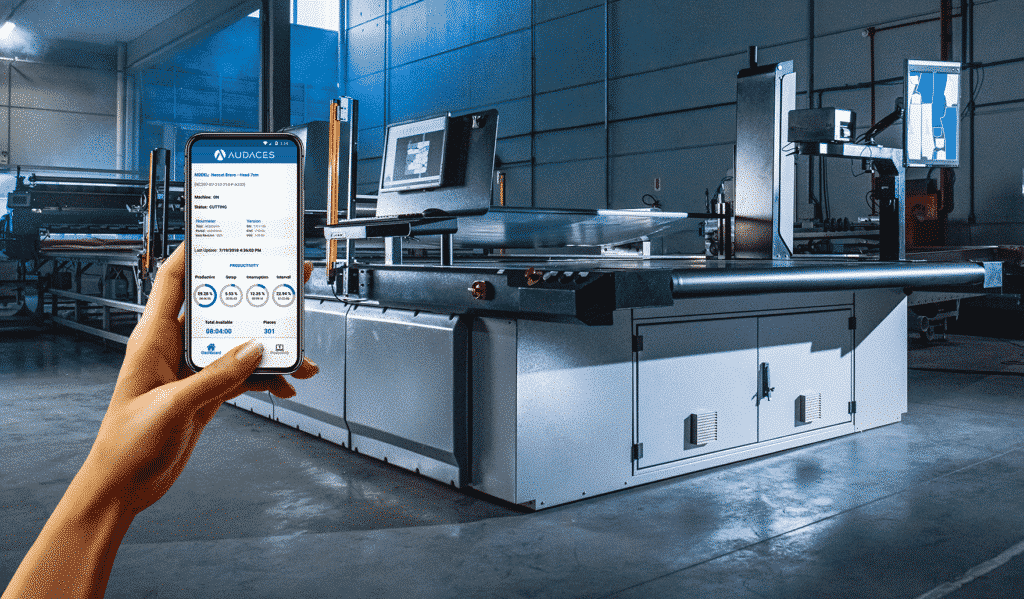
How do you feel knowing that you have developed a solution that revolutionized the lives of fashion professionals and that will transform the lives of many others?
Ricardo: I’ve had personal testimonies from people who approached me and said, “Look, you changed my life”. I didn’t intend to change anyone’s life, but I realize that we really made a very important delivery of value, especially to that person. I think that similar to this we must have many other cases. I can say that this is a sense of accomplishment. There are many people who act socially in a cause. We acted socially in a very interesting way: helping people and families to progress, to hire other families, and everything else. We got to know very small companies that, of course, because of the competence of the professionals who are there and also a lot with the help of our technologies, developed and became large companies. And if I had one word to say: yes, I am a very proud person because of that. We really made a very nice delivery in these years of acting and I’m sure that fills me up, makes me very proud and I think this can be treated as a work that we did. And I am very happy to have come this far with this kind of delivery.
Grando: This is the most fantastic and most rewarding part. Receiving praise or people coming to tell us that we transformed their lives, that we transformed their companies. A small company that emerged and grew a lot because we helped. Or a giant company, which we managed to transform. We have many cases of giant companies that we have transformed, and that is fantastic. And we transform it for people. And, at the same time, within Audaces, we have fantastic stories. There are people who have been here for decades, and who evolve all the time. And what makes me very happy is knowing that that dream of ours 30 years ago came true. Our main objective was to work with good people, people who like challenges. And transform people’s lives. And that’s really cool.
What does a professional need to be/have to work within Audaces?
Ricardo: The first thing is to have your own engine: to have the will and disposition. I think that for a person to stand out here, they must seek responsibility. Sometimes a person comes here looking for again, but that gain will not happen if the person does not take responsibility. We have a few generations of managers here who, more than the financial issue (which is always very important and pertinent), come to look for how they project themselves forward. And this will only happen because of adding responsibility and delivering results. I think this is a very important thing. Of course, in the initial stage of a professional’s life, this is very subjective. So within Audaces, we have leadership training programs, which help people to lead themselves as individuals and also to seek daily leadership. There is also personal leadership – I can make my deliveries, I can make my result. And there is group one, where you can catalyze the effort of several people to make the delivery as well. Audaces make room for this. But the most important thing is for us to understand that we can go much further than what we imagine.
Grando: You have to have a strong identification with our three values, you have to be a person who likes to overcome challenges, whatever the area, because we, even in the operational areas, are always challenging ourselves to do better. If we want to bring the best solution to our clients, we also have to have the best solutions at home. You have to know how to work in collaboration, you have to know how to work in a team and for the team. We are sure that the result only comes if we work in collaboration. And the person has to like the result, that is, we are here to reach the goal, to hit the goal, we are here to bring innovative solutions to the market. We’re not here to play, we’re here to have fun generating results.
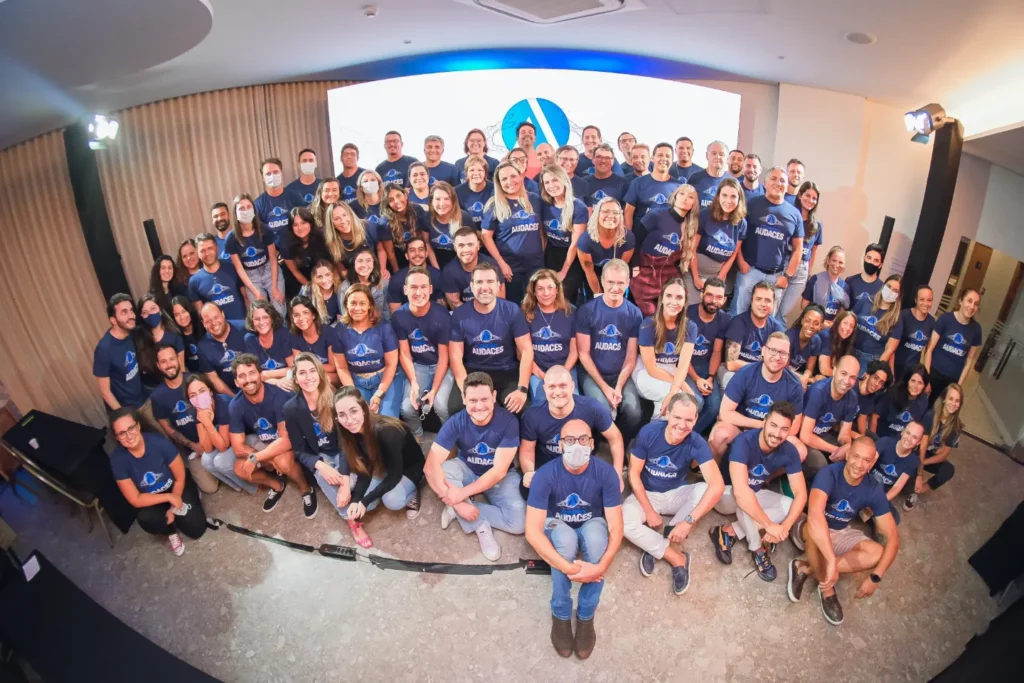
Audaces’ mission is “Promoting customer success through industry 4.0”. How does this happen in practice?
Ricardo: We are talking about Industry 4.0, which is precisely how processes, equipment, and intelligence interact in search of improving results. Industry 4.0 is a name for these technologies. But Audaces has been doing this for a long time. Long before this concept existed. So Industry 4.0 comes with a very interesting footprint for all the processes that have within the clothing industry. And Audaces has been doing this for a long time. I think that Industry 4.0 is very much in this line of empowering and giving resources to our clients in a different view than simply putting it online and much more. These are things that happen at the same time, providing more efficiency, making the company more perennial in the market, because it delivers at a better cost, faster, without errors, and with assertiveness. And these are things that every industry needs, and the apparel industry even more so.
Grando: We apply Industry 4.0, to summarize, in two broad areas: Creation 4.0 and Cutting Room 4.0. In the creation 4.0 we have several solutions, with Audaces 360. Within 360 we have ISA, which is our Fashion PLM. We have 4D, which is revolutionary for the stylist. We have Idea, Molds, Fit and Overcome. In other words, it is a set of applications and solutions integrated into a technological platform that puts all people in the creative area working together and as a team. Because that’s what we believe. The creation of fashion has to be faster and faster, it has to reach the market faster and faster, with a cost that the consumer wants to pay, with the style that the consumer wants to buy. And those who can do this in a faster and more efficient way, sell more. And how do you do it? With the entire creative team integrated. When you have sequential processes within a “normal” industry, let’s say, 2.0 or 3.0, it’s very common to see people in the creative area working stressed all the time. They are always running behind schedule. And then creativity takes a back seat. With this technological platform, with these processes, with our knowledge, we can change the culture of these companies, change the environment, change people’s performance. And they start working happier because they can dedicate more time to what really adds value in the creation and deliver their work on time. The other day we received a client here at Audaces and she said that, as a creative manager, she never imagined that she could have a peaceful life like the one she has today, where she arrives for meetings on Monday and everything is fine. within the time limit. “The last collection I made was the best-selling in history. You changed my life,” she told us. And you can do it, the technology is there for that. Audiences no longer sell a cutting machine or a spreader. We sell a fully integrated cutting room and this equipment talk to each other, make decisions for the customer and you can have a much more efficient cutting room there. And again, people working feel much more valued, in a more relaxed and much more productive work environment.
The 30 years mark a Global repositioning of the company, the “We are the Industry 4.0”. What does this positioning represent for Audaces and what impacts can we generate for the world?
Ricardo: The world we inhabit has long ceased to be local. Audaces is present in 70 countries, and this presence comes precisely with technologies that are embedded in some niches of the industry. When we reinforce this issue of Industry 4.0, it means that we are at a higher level. You take several processes that are automated and integrate them. With this vision of integrated processes, you have an additional corporate gain. Not just in one sector or in that niche, as I said. This is not just for our state, but for Latin America and anywhere in the world. And what we seek with this new positioning and with this bias is to reach new markets that we do not operate so directly, but presenting this proposal that, more than optimizing a cut, modeling or something like that, we automate and it improves a whole process and this level of gain is much higher than that place I mentioned.
Grando: Today, in the world, almost all the clothing industries are still in Industry 3.0. Today we are a global company, we are ahead of more than 70 countries with almost 100 thousand users. Our big challenge and what we really want is to take this industry 4.0 experience to the world. And because it’s accessible today, it’s easy: people can use it, companies can buy it. And we have to bring not only the solution, but the knowledge to help people adopt this technology. And we are prepared for that.
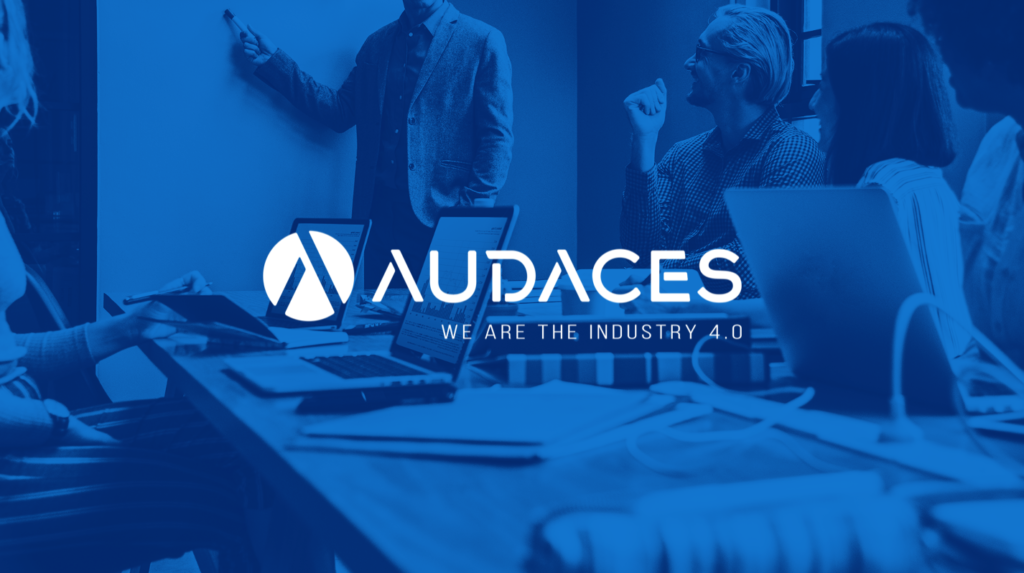
In these 30 years, what were the biggest highlights and the biggest lessons learned?
Ricardo: Well, 30 years have a lot to tell. We had several phases where at every turn, which means overcoming challenges that were difficult to overcome, we celebrate. I remember a lot from the initial part, where we had to deliver an optimization result as a whole. We managed to get there, and that’s really cool. Another stage where we had to go international, move or deliver in a way that could be seen around the world. We’ve always had this worldview, understanding that the world’s technology serves different areas, and this exchange always has again. That’s another milestone. The time when we entered the manufacturing of equipment, ceasing to be a company that only delivered software and delivered hardware, was also a milestone. We had, in a first moment, the plotter part and, in a second moment, cutting machines and spreaders. And that, this set of solutions, positioned us in a very prominent way. Today we are among two or three companies in the world that have the entire line of products, and this is quite representative. And that’s another highlight. It is also impossible to leave behind another great milestone when we settled abroad. A few attempts in Latin America, but we really set foot in Italy, with our branch there. And that’s a big milestone. And today I can tell you that we are living a new milestone. This milestone that we called industry 4.0, where all our solutions are integrated. We can work as if it were a solution cloud. And that makes the market exploitable in another way. In the sense that yesterday I worked in a niche and today, I can basically work in any company niche. So this is the new milestone that we are living and which is a very interesting thing too. We are already enjoying it a lot and the results are already coming with this new positioning.
Grando: Well, learning we have all the time. But the biggest one is that it is really worth investing in people. Whenever we invest in people who believe in the Audaces dream, we get it right. The great lesson is that it is really worth investing in people, they are the ones who change the world. And I think one of the biggest highlights is that we were born with the spirit of being global. As a technology company, we knew that we couldn’t be a one-country company, it had to be global.
We have to compete in the most demanding markets in the world. So why did we choose to be an Italian company too? Because, in Italy, there is actually a very high level of demand for fashion. If it’s not the biggest in the world, it’s certainly among the three biggest in the world in terms of demand. So, if we are there and we serve the clients there well, we will serve well anywhere, including here in Brazil. This is our challenge: we were born with a global spirit and we are at that level. And I say it again: we conquered this with Audacity.











